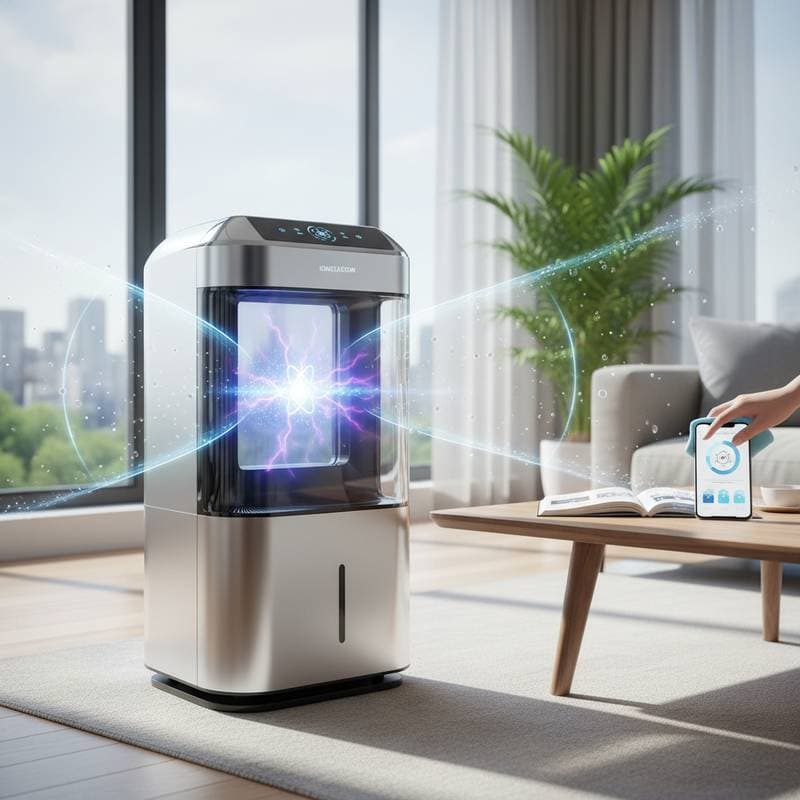Understanding Filterless Plasma Technology for Indoor Air
Traditional air purifiers often require frequent filter replacements, leading to ongoing costs and maintenance challenges. Filterless plasma purifiers address these issues by using ionization to neutralize airborne pollutants directly. This approach results in cleaner air with minimal upkeep.
These devices generate a field of charged particles, known as plasma, which breaks down dust, smoke, allergens, and certain microbes. Without physical filters, airflow remains unobstructed, promoting efficient operation. Users benefit from reduced expenses and simpler care routines.
For individuals with severe allergies or chemical sensitivities, consultation with a medical or environmental professional is advisable before adopting this technology.
Key Principles of Plasma Air Purification
Ionization technology forms the core of filterless plasma purifiers. The device creates ions that attach to pollutants, causing them to lose structure or clump together for easier removal from the air. This process occurs continuously as air circulates through the unit.
A primary consideration involves ventilation to manage potential ozone production. Plasma systems perform best in spaces with adequate air exchange to maintain safe levels. Verify that any selected model complies with established indoor air quality standards from recognized authorities.
Effective use depends on proper sizing and placement, ensuring the purifier covers the intended area without obstruction.
Required Tools and Materials
- Filterless plasma air purifier suited to room size
- Soft, dry cloth for surface cleaning
- Reliable power outlet in an area with strong airflow
- Optional soft brush for clearing vent openings
- Mild, non-abrasive detergent for occasional housing wipes
Gather these items prior to installation to facilitate a smooth setup process.
Installation and Operation Guide
-
Select appropriate capacity. Review the purifier's specifications to match its clean air delivery rate with the room's dimensions. Undersized units reduce effectiveness, while oversized ones may produce unnecessary energy use.
-
Position for optimal performance. Place the device in an open location, maintaining at least one foot of clearance from walls, curtains, or other obstructions. Ensure vents and intake areas remain fully accessible.
-
Connect to power. Insert the plug into a grounded outlet and activate the unit. Advanced models feature sensors that monitor air quality and adjust ion output automatically for consistent results.
-
Operate continuously. Run the purifier around the clock for real-time pollutant neutralization. Reduce fan intensity during quiet periods to minimize sound levels without compromising efficacy.
-
Perform weekly exterior maintenance. Use a slightly damp cloth to remove dust from the housing and accessible vents. Refrain from directing liquids toward internal components or outlets.
-
Monitor status indicators. Observe built-in lights or displays for alerts on air quality or system status. Refer to the user manual for troubleshooting steps if issues arise.
-
Maintain ion components. Inspect and clean replaceable ionizing elements, such as pins or plates, according to the schedule in the manual, typically every three to six months.
-
Incorporate natural ventilation. Periodically open windows or doors to refresh the indoor environment and prevent accumulation of byproducts.
Follow these steps to integrate the purifier seamlessly into daily routines.
Essential Practices and Precautions
Recommended Actions
- Maintain ventilation by cracking windows during extended use.
- Clean the exterior surfaces weekly to avoid dust accumulation.
- Adhere strictly to the manufacturer's guidelines for operation and care intervals.
- Limit use to dry, enclosed indoor environments.
Actions to Avoid
- Operate near heat sources like candles or in high-humidity areas such as bathrooms.
- Apply abrasive or chemical-based cleaners to sensitive electrode surfaces.
- Disregard warnings about ozone levels or unusual electrical smells.
- Alter the device or obstruct airflow paths in any way.
These practices ensure safe and reliable performance over time.
Situations Requiring Professional Assistance
Seek help from a qualified technician if the unit exhibits sparking, persistent warning lights, or unusual odors. Integration with central heating, ventilation, and air conditioning systems demands expert evaluation to avoid complications.
Internal diagnostics or repairs involving electrical components fall outside routine user maintenance. Prioritize safety by scheduling inspections for any suspected faults.
Investment and Effort Overview
Home plasma purifiers vary in price based on coverage area, smart features, and build quality, typically ranging from basic models under $200 to advanced units exceeding $500. Initial setup requires approximately ten minutes.
Weekly cleaning sessions add another ten minutes, with overall costs remaining low due to the absence of filter purchases. Long-term savings accumulate through reduced waste and energy efficiency.
Ongoing Maintenance Schedule
- Weekly tasks: Wipe down the exterior and vents to sustain appearance and function.
- Quarterly or semi-annual checks: Clean or replace ion modules as specified in the manual.
- Biannual review: Test airflow rates and performance metrics to confirm optimal operation.
- Alert signs: Address diminished airflow, increased noise, or new scents promptly through cleaning or service.
Consistent adherence to this schedule preserves the unit's effectiveness.
Sustaining Fresh Indoor Environments
Filterless plasma purification delivers reliable air quality improvements with straightforward integration. The technology targets pollutants at their source, fostering healthier living spaces without the burden of frequent replacements.
Proper installation and routine care yield quieter operation and enduring benefits. Homeowners gain confidence in cleaner, more breathable air tailored to their needs.
